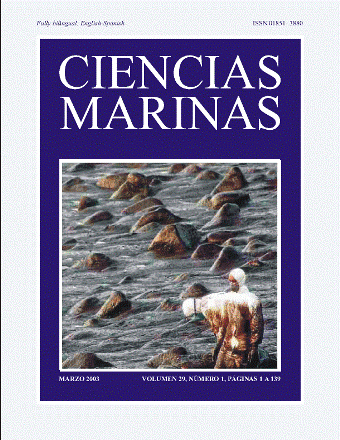Are coastal resources of NW Portugal fingerprinting hydrocarbons released from the Prestige accident?
Main Article Content
Abstract
Seventy-one samples of mussels, sardine, hake, blue whiting and pouting from the NW Portuguese coast, collected between 18 November 2002 and 6 January 2003, were analyzed for total hydrocarbons, individual n-alkanes and major isoprenoids, pristane and phytane. Hydrocarbons (expressed on chrysene equivalents) registered in whole soft tissues of mussels were below 0.5 µg g–1, with a few exceptions (maximum 1.6 µg g–1). Relatively low levels and sporadic enhanced values were also found in fish fillet samples. In spite of this, analyses of individual n-alkanes and major isoprenoids showed that 10–61% of the samples (according to the species) exhibited these compounds in the proportions of the Prestige fuel signature. Similar diagnostic ratios in biological samples and Prestige fuel and n-alkane composition corroborate the fingerprint hypothesis in coastal resources from NW Portugal.
Downloads
Article Details
This is an open access article distributed under a Creative Commons Attribution 4.0 License, which allows you to share and adapt the work, as long as you give appropriate credit to the original author(s) and the source, provide a link to the Creative Commons license, and indicate if changes were made. Figures, tables and other elements in the article are included in the article’s CC BY 4.0 license, unless otherwise indicated. The journal title is protected by copyrights and not subject to this license. Full license deed can be viewed here.

